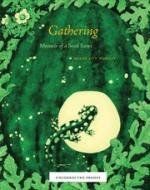

A trap crop is a plant that attracts agricultural pests, usually insects, away from nearby crops. This form of companion planting can save the main crop from decimation by pests without the potential issues and controversy involved in using pesticides. Trap crops can be planted around the circumference of the field to be protected, or interspersed among them, for example being planted every ninth row.
Trap crops are, when used on an industrial scale, generally planted at a key time in the pest's lifecycle, and then destroyed before that lifecycle finishes and the pest might have transferred from the trap plants to the main crop.
Examples of trap crops include:
Recent studies on host-plant finding have shown that flying pests are far less successful if their host-plants are surrounded by any other plant, or even “decoy-plants” made of green plastic, cardboard or any other green material. The host-plant finding process occurs in three phases.
The first phase is stimulation by odours characteristic to the host-plant. This induces the insect to try and land on the plant it seeks. But insects avoid landing on brown (bare) soil. So if only the host-plant is present, the insects will quasi systematically find it by simply landing on the only green thing around. This is called an “appropriate landing”. When it does an “inappropriate landing”, it flies off to any other nearby patch of green. It eventually leaves the area if there are too many ‘inappropriate’ landings.
The second phase of host-plant finding is for the insect to make short flights from leaf to leaf to assess the plant's overall suitability. The number of leaf-to-leaf flights varies according to the insect species and to the host-plant stimulus received from each leaf. But the insect must accumulate sufficient stimuli from the host-plant to lay eggs; so it must make a certain number of consecutive ‘appropriate’ landings. Hence if it makes an ‘inappropriate landing’, the assessment of that plant is negative and the insect must start the process anew.
Thus it was shown that Clover used as a ground cover had the same disruptive effect on eight pest species from four different insect orders. An experiment showed that 36% of cabbage root flies laid eggs beside cabbages growing in bare soil (which resulted in no crop), compared to only 7% beside cabbages growing in clover (which allowed a good crop). Also that simple decoys made of greencard disrupted appropriate landings just as well as did the live ground cover.
References


 The food industry's digusting secrets exposed. How to protect yourself.
Click Here!
The food industry's digusting secrets exposed. How to protect yourself.
Click Here!
Discover how to easily build an attractive and affordable greenhouse that will grow anything in any conditions. Also, building your own greenhouse just makes economical sense. You can build a greenhouse at just a fraction of the cost of buying a pre-built one. Most pre-built greenhouse you buy need to be assembled anyway, you are really just paying hugely inflated prices for the material.

Daughter of Iowa farmers, Missouri homesteader, and mother of five, Diane Ott Whealy never anticipated that one day she would become a leader in a grass-roots movement to preserve our agricultural biodiversity. The love for the land and the respect for heirloom seeds that Diane shared with her husband, Kent Whealy, led to their starting Seed Savers Exchange in 1975. Read More...
